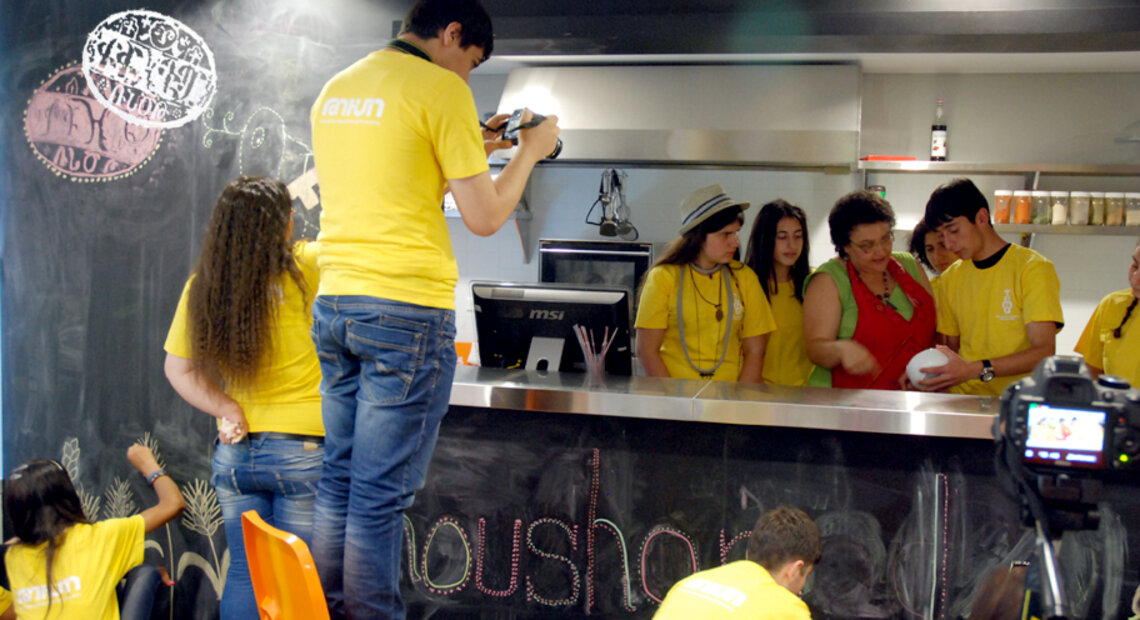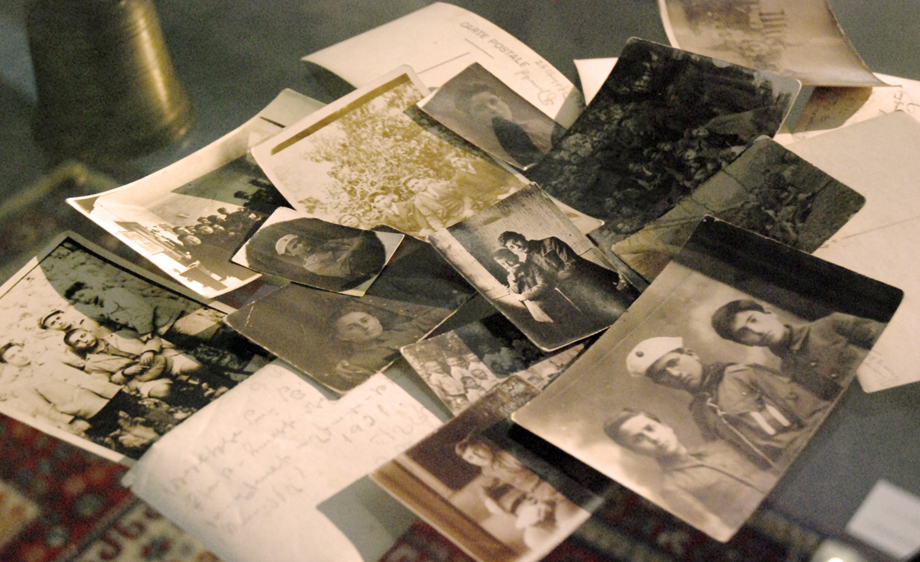TUMO (Yerevan)
Center for creative technologies
(July 1-27, 2013)
Working with Houshamadyan team member Vahé Tachjian, students developed different skills in the field of investigation, reconstructing memory, storytelling and story writing.
They collected oral history interviews, old songs and memory items in relation to Ottoman Armenians from their own homes or from the families of relatives and neighbors. With the help of the workshop leaders they wrote the stories of these objects and of their initial owners, to trace the route already traversed by the items, and to place the stories in historical context. Through these collected materials and the edited texts, they highlighted micro-histories, which appear at first sight to be the stories of the items’ individual owners but, at the end, also constitute elements of a broader collective memory.
Through the workshop, students developed new perspectives on the history of the Armenians in the Ottoman Empire.
During the second part of the workshop, participating students worked with the artistic director of Houshamadyan, the visual artist Silvina Der-Meguerditchian, to produce visual products for the site. Silvina collaborated with the students to design content for the Houshamadyan site and other visual outcomes, and to ensure that the design helps communicate these stories and key message. Working with her, the participants learned how to document visually recollected objects, do restoration of photographs, and produce podcasts and short video pieces.
The final component of the workshop was a public exhibit that featured video projections and glass case installations of objects collected by students depicting fragments of the history of Armenians in the Ottoman Empire.

Food and tradition
Sonia Tashjian together with Tumo students prepared two traditional Armenian dishes at the Tumo cafeteria. The video shooting was carried out by the students themselves under the guidance of Houshamadyan artistic director, Silvina Der-Meguerditchian.
Filled/Stuffed Patties (köfte)
Ingredients for the dough
- ½ kg (1.1 lb) finely ground meat
- ½ kg (1.1 lb) finely ground cracked wheat
- 1 teaspoon red pepper-tomato paste
- Red and black pepper
- Cumin
- Salt
Ingredients for the filling
- ½ kg (1.1 lb) minced meat
- 1 onion
- 1 tablespoon oil
- ½ cup walnuts
- 7 spices
- Salt
Preparation
- 1.First prepare the filling. Add the meat to the fried onions and cook while stirring continuously. Add the walnuts and the seasoning. Leave to cool.
- 2.Prepare the dough by adding all the ingredients and mixing until the dough is soft but not gluey.
- 3.Take a small amount (about the size of a walnut), squeeze it in the hand, and make it into a patty then make a hole in it with a finger. Increase the size of the hole with the finger, add the filling and close giving the patty the shape of a lemon.
- 4.Cook in boiling saltwater or yogurt. Or deep fry in hot oil.
Tatkhan (A dish from Mousaler)
Kmmaoune in the Mousaler dialect
Ingredients
- 1 cup toasted wheat
- ½ cup toasted chickpeas
- ½ cup toasted sunflower seeds
- ½ cup toasted pumpkin seeds
- 1 cup toasted nuts (walnuts, peach kernels, hazelnuts, earth almonds)
- ½ cup toasted wild marjoram and zaatar (thyme)
- ½ cup toasted sesame
- 1 tablespoon sumac
- 1 tablespoon cumin
- 1 tablespoon red ground pepper
- 3 tablespoons salt
Preparation
Grind all ingredients separately, mix, season and keep in a container. Add a certain amount of oil before serving. Eat with dipping bread into the mix.

Reconstructing Parchandj village
Tumo students, in collaboration with the Houshamadyan website project, worked on reconstructing the Armenian village of Parchanj in Kharpert/Harput by using multimedia tools. A village map of Parchanj by Manoog Dzeron, published in 1938, served as the basis for the reconstruction. This video displays the work of the students in recollecting various aspects of the Armenian village's life.
Parchandj village from Houshamadyan on Vimeo.

Objects that tell stories
Tumo students collected memory items in regards to Ottoman Armenians from their own homes or from relatives and neighbors—such as a necklace from Sis, a belt from Arapgir, and a Bible from Erzurum/Garin. Each item tells a story of an individual or entire family. The students also wrote the stories of these objects, tracing the route already traversed by the items. Through these collected materials they highlighted microhistories, which constitute elements of a broader collective memory.
Objects that tell stories from Houshamadyan on Vimeo.

The photo album of Avak Avakian
Born in 1908 in Erzincan/Yerzenga. In 1915, he loses his family during the Genocide. Avak and his brother are taken to Istanbul where they are put in the “Karagoezian” orphanage (located in the Shishli/Şişli district). His brother gets sick and dies. In 1922, they move the orphans to the Achilleion palace in the Greek island of Corfu/Kerkyra. In 1946, he immigrates to Soviet Armenia.


